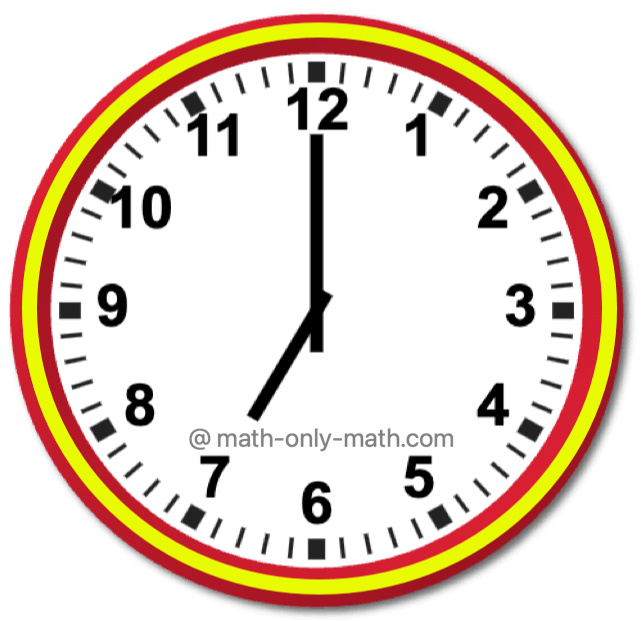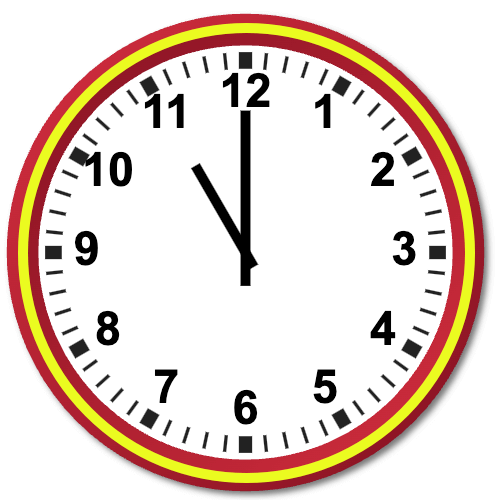Subscribe to our ▶️ YouTube channel 🔴 for the latest videos, updates, and tips.
Antemeridian (a.m.) and Postmeridian (p.m.)
We will learn about the use of antemeridian (a.m.) and postmeridian (p.m.).
In English system the day starts at midnight and ends at the next midnight.
The day begins just after 12 o’clock at midnight. The next 12 o’clock in the day time is called midday. Then the next 12 o’clock is the next midnight.
The time from a midnight to coming midday is called antemeridian. It is written in short as a.m. We say the time between midnight and noon is called a.m.
The time between 12 o’clock of the day, i.e., midday to next midnight is known as postmeridian. It is written in short as p.m.
We say the time between midday (noon) to next midnight is called p.m.
Antemeridian (a.m.) and Postmeridian (p.m.) are Latin words which mean midnight to noon (a.m.) and noon to midnight (p.m.). We use a.m. to express the time between 12:00 midnight and 12:00 noon. We use p.m. to express the time between 12:00 noon and 12:00 midnight.
Our general clock expresses the time of both time periods by the same numbers. We affix a.m. for the time between midnight and noon and p.m. for the time between noon and midnight.
It can either be 8 o’clock before noon or after noon, because the two
hands (hour hand and minute hand) are in the same position on the dial
of the clock. We affix a.m. for the time before noon and p.m. for the
time after noon, so, we write 8 a.m. or 8 p.m.
We often go to school at 7 a.m. and return home at 2 p.m. Offices
often open at 10 a.m. and close at 5 p.m. We go to be bed at 10 p.m. in
the night and get up at 6 a.m. in the morning.
The time before 12:00 noon is expressed as a.m. and the time after 12:00 noon is expressed as p.m. When it is 12 0'clock at night, we say it is 12:00 midnight or 00:00 hour. When it is 12 o'clock during day, we say it is 12:00 noon or 12:00 hours.
am or pm:
Each day has 24 hours, so, the hour hand goes around the clock twice in a day.
A day ends at 12 midnight and a new day begins at the same time.
The time between 12 midnight and 12 noon is called am.
The time between 12 noon and 12 midnight is called pm.
 7 o'clock in the morning 7:00 am |
 11 o'clock in the night 11:00 pm |
Remember
There is no am or pm written with 12 o'clock. It is 12 o'clock noon or 12 o'clock midnight.
Worksheet on am or pm:
1. Rewrite the time using am or pm for the following:
(i) 8 o'clock in morning _____.
(ii) Ten fifteen at night _____.
(iii) 12:40 in the afternoon _____.
(iv) Half past four in the morning _____.
Answer:
1. (i) 8 am
(ii) 10:15 pm
(iii) 12:40 pm
(iv) 4:30 am
2. Write the time:
|
I: |
Time now |
Time after 3 hours |
|
(i) |
1:00 pm |
__________ |
|
(ii) |
9:30 am |
__________ |
|
(iii) |
7:50 pm |
__________ |
|
(iv) |
11:25 pm |
__________ |
|
II. |
Time now |
Time after 2 hours |
|
(i) |
3:30 am |
__________ |
|
(ii) |
1:25 pm |
__________ |
|
(iii) |
8:40 pm |
__________ |
|
(iv) |
12:20 am |
__________ |
Answer:
2. I. (i) 4:00 pm
(ii) 12:30 pm
(iii) 10:50 pm
(iv) 2:25 am
II. (i) 5:30 am
(ii) 3:25 pm
(iii) 10:40 pm
(iv) 2:20 am
3. Tick (✔) the correct choice for the following activities:
(i) I go to school at 7 am/pm
(ii) I go to play at 4 am/pm
(iii) I take dinner at 8 am/pm
(iv) I go to bed at 10 am/pm
Answer:
3. (i) I go to school at 7 am.
(ii) I go to play at 4 pm.
(iii) I take dinner at 8 pm.
(iv) I go to bed at 10 pm.
Related Concepts
● To Measure the Length of a Line-segment
● Examples on Unit of Mass or Weight
● Units for The Measurement of Capacity
● Examples on Measurement of Capacity
● Antemeridian (a.m.) or Postmeridian (p.m.)
● Calendar
● Reading and Interpreting a Calendar
From Antemeridian and Postmeridian to HOME PAGE
Didn't find what you were looking for? Or want to know more information about Math Only Math. Use this Google Search to find what you need.



New! Comments
Have your say about what you just read! Leave me a comment in the box below. Ask a Question or Answer a Question.